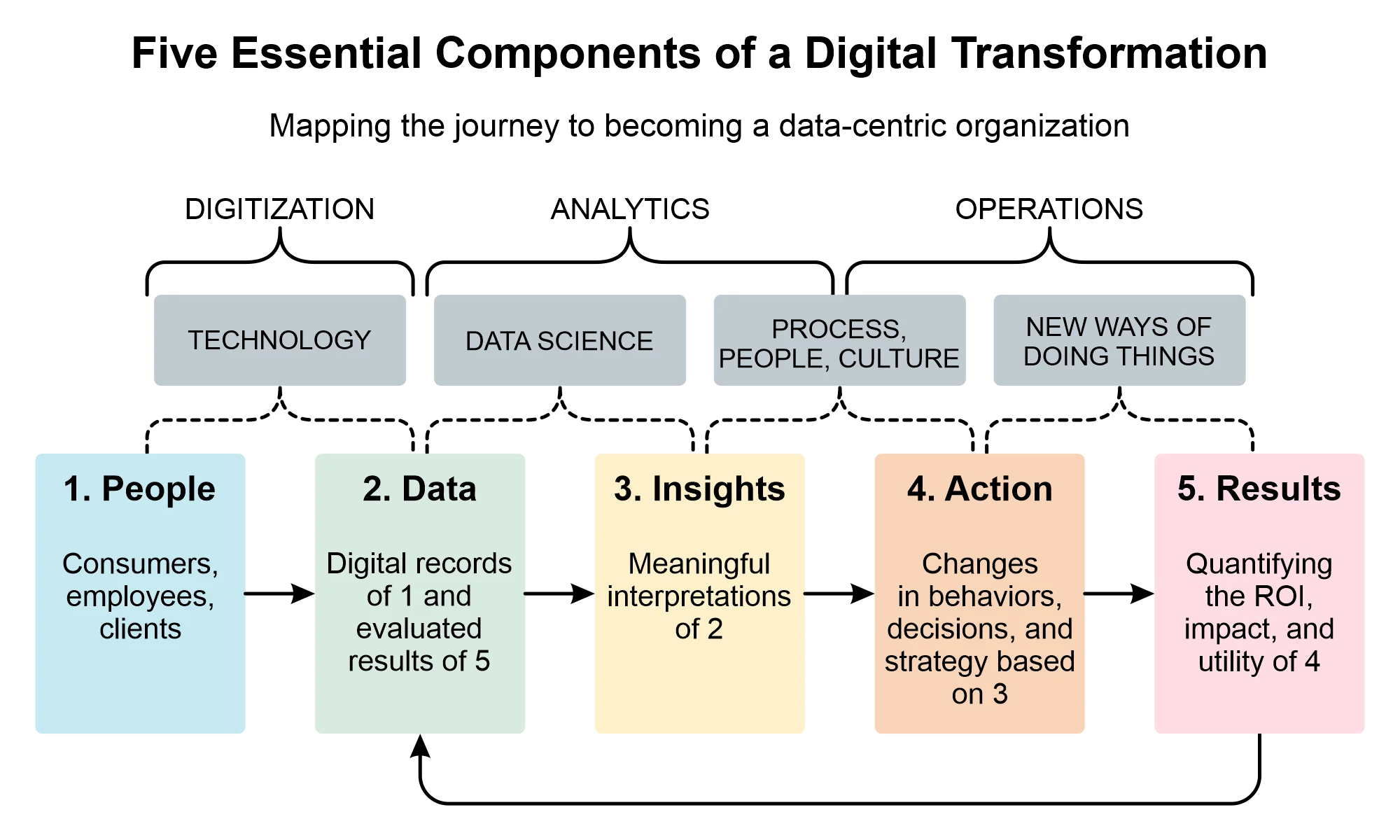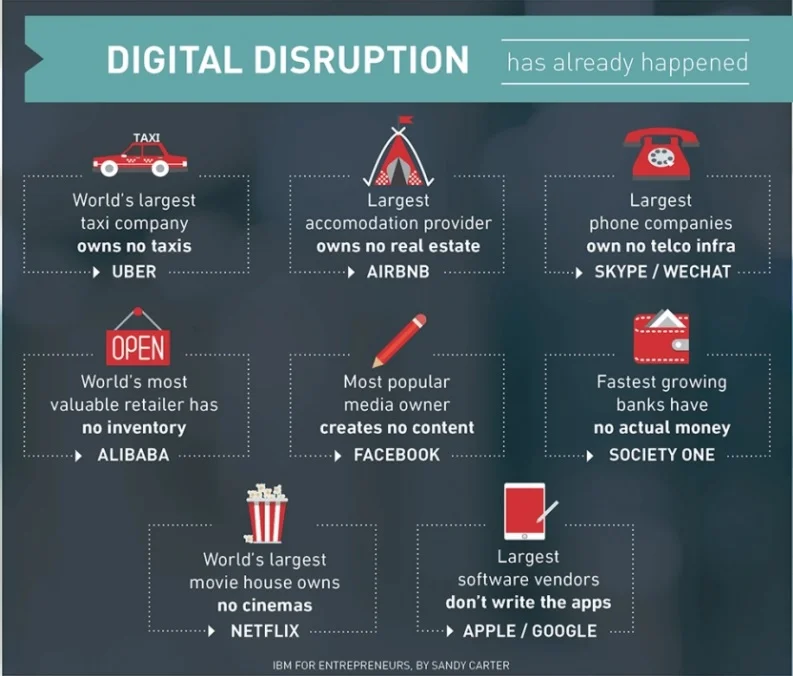A value-driven approach to digital transformation and business complexity




“When digital transformation is done right, it’s like a caterpillar turning into a butterfly, but when done wrong, all you have is a really fast caterpillar”
— George Westerman, MIT Sloan Initiative on the Digital Economy
Modern programming languages, frameworks, and technologies offer an incredible foundation for great software. Further, software products can be deployed to the cloud, where powerful abstractions and a diminished operational burden dramatically reduce the cost of software development, delivery, and maintenance. Businesses using modern technologies rarely need to concern themselves with low-level hardware or software design – they can use IaaS (infrastructure as a service), PaaS (platform as a service), and SaaS (software as a service). Put simply, it’s never been easier and cheaper to digitally transform. However, accelerating digital transformation and maximizing the value of digital transformation is still a complex and challenging task.
Definitions
Some valuable concepts have no firm definition or common agreement: digitalization, digital technologies, digital innovation, and digital transformation. Let’s start with digitalization. Guo, et al., (2020) synthesized a range of these concepts into simple definitions:
“Digitalization refers to the use of digital technologies such as information, computing, communication, and connection technologies to promote organizational changes.” (p. 2)
… “manifested in organizations as digital artifacts, digital platforms, digital infrastructures” (p. 4)
… “encompassing digital innovation activities such as creating new products, services, business models, and organizational forms (p. 19)
… “Digital technologies can be classified into seven types: social, mobile, big data, cloud computing, Internet of Things (IoT), platform development, and AI-related technologies (p. 4-5) … [that are] programmable, addressable, senseable, communicable, memorable, traceable, and associable (p. 5-6)
… Digital transformation is reflected through five items: (1) strengthening the application of online office tasks, (2) improving the digitalization of supply chain channels, (3) adopting digital artifacts, such as digital products or services, (4) adopting digital platforms, such as digital communication platforms, and (5) adopting digital infrastructures, such as digital technology systems.” (p. 7-8)
Digital transformation adds complexity to business operations
But as a tradeoff, digital transformation adds complexity to business operations. IT infrastructure today is layers and layers of abstraction, with each layer adding more functionality to an existing system. While this added functionality aims to deliver business value, it can significantly increase infrastructure complexity and make management more challenging (see Figure 1).

Digital transformation is all about balance. On the one hand, businesses can use advanced (complex) digital products, services, and products to deliver more value. On the other hand, businesses should keep their processes simple for operational efficiency and agility. Enterprises need to decide how to approach complexity and squeeze the most benefit out of it.
When done wrong, digital transformation can overburden already messy systems and make them much worse than before. But when done right, the complexity digital transformation adds can be extremely beneficial, as demonstrated by the many digital businesses that emerged from the COVID-19 pandemic.
How the COVID-19 pandemic accelerated digital transformation in businesses
The COVID-19 pandemic has disrupted our society and economy (Helper and Soltas, 2021). It has eliminated many SMBs (Small to Medium-Sized Businesses), shrunk entire industries, disrupted supply chains, and contributed to semiconductor shortages (J.P. Morgan Research, December 1, 2021).
Although the pandemic, without a doubt, has caused massive harm to humanity, it has also helped humanity to imagine new and unique ways to conduct business. Businesses have adapted to lockdowns and remote working in large part thanks to digital transformation.
McKinsey & Company Report
What’s more, the COVID-19 pandemic has substantially accelerated digital transformation in businesses – so much so that the management consulting firm McKinsey & Company asserts that businesses are ahead of previously projected adoption timelines by years (McKinsey & Company, October, 2020).
Globally, the average share of digital customer interactions was 58% in July 2020 – a noticeable increase from 36% in December 2019. The July 2020 metrics showed that businesses were ahead of earlier projections by three years.
Similarly, the share of products and/or services that were partially or fully digitized was 55% in July 2020, versus just 35% in December 2019. The adoption acceleration in this area was a striking seven years ahead of projects.
And that’s not all. Not only did the pandemic accelerate digital transformation, but it also showed that digitalization could help businesses better adapt to abrupt changes in their environments.
Fujitsu Report
Fujitsu compared the revenue changes in online and offline organizations due to the pandemic (Fujitsu, 2021). In the report’s context, offline organizations were organizations that provided products and services entirely or partially offline.
Fujitsu’s report indicates that a whopping 53% of offline organizations saw a drop in revenue in 2020 and that only 33% had revenue increase. In contrast, 69% of online organizations saw increases in revenue, and only 20% had revenue decreases.
With that, digitalization appears to be one of the critical success factors for businesses to increase agility and adapt efficiently to changes in their environment. Among other things, this is because digitalized businesses can:
- Remotely execute operations more effectively.
- Collect vast amounts of logs and data about products and services, allowing enterprises to discover issues early and identify trends in customer demand.
- Scale-up operations to simplify business growth.
The potential downsides of digital transformation
Digital transformation has immense business value, but there is one critical issue here – not every organization is fully willing to start digital transformation due to a variety of factors. For example, Skift and AWS presented the following respondent barriers to switching to the cloud in the travel and hospitality industry (Skift, 2021):
- Costs and budget (26%),
- Lack of experienced staff (17%),
- IT and data security concerns (14%),
- Complexity (13%),
- Competing priorities (9%),
- Indecision from leadership (8%),
- Privacy concerns (7%),
- Lack of clarity about benefits (5%), and
- Other (1%).
Furthermore, digital transformation by itself cannot guarantee cost reductions and business growth. Without complexity management, digital infrastructure can be virtually impossible to handle.
Inability to fix complex legacy systems
Although the clear benefits of digital transformation have been established, digital transformation may be detrimental to businesses for a variety of reasons. Hybrid environments with traditional and digital systems exhibit significant pain points when trying to manage the processes. This situation is especially true for large, older organizations with legacy applications that have long avoided digital transformation for one reason or another.
Offline businesses can be riddled with inefficiencies, ranging from bloated processes and data silos to decades of bad workflows piled on top of each other. Inefficiencies are bad in themselves, but what is worse is that businesses can be hopelessly reliant on them. Throughout the years, some businesses have become so dependent on their poor processes that they have avoided optimizing them without a complete reorganization.
Digitalization alone cannot improve horribly inefficient and messy processes and systems from the get-go. In fact, without significant rethinking and restructuring, offline businesses may see losses from digital transformation (Ross, May 6, 2020).
Worsened customer experience
With digital transformation, businesses can offer their customers great personalization, variability, and convenience. But without proper implementation, interacting with a digitalized business can become unnecessarily complicated for customers, especially in terms of customer support.
For example, if a business offers hundreds of product variations but does not permit the customer to conveniently navigate them, customers might not fully benefit from the configurability. Similarly, if an organization’s teams are isolated from each other, customers might need to contact multiple departments to request product returns or obtain information about the status of their orders.
Nonetheless, when executed effectively, digital transformation can increase convenience for customers to interact with businesses while delivering more value (Mocker, et al., 2014). An exemplar for successful digitalization is Amazon.com.
Amazon.com is home to tens of millions of products, with tens and hundreds of variations for each. While the hyper-scale of Amazon.com might seem like a total nightmare for end-users, the company has managed the customer-facing experience so that such a volume of choices appears seamless.
Search filters allow customers to quickly go through available options, while features such as reviews and ratings will enable them to locate the correct product quickly. On top of that, the machine learning-powered recommendation systems further facilitate customer decisions by producing highly relevant product suggestions and promotions. (Camhi and Pandolh, 2017).
Hindered employee performance
Poor digitalization can hinder employee performance as well. Without a unified, streamlined work process, employees might need to enter data several times and go back and forth between different departments to solve seemingly simple issues (Cavallo, Mar. 29, 2017).
Any form of internal complexity can exhibit inefficiencies and increase operational costs. What is more, internal complexity can escape into the outer world and affect customers. Inquiring about products or services or solving technical issues can become terrible experiences with disorganized businesses and siloed teams.
Challenging management and control
Simple digital workflows can be managed manually with ease, without any automation. However, automation is a vital tool for complex processes with many steps and dependencies (Newman, May 20, 2014). Manually managing complex workflows has two huge disadvantages:
- Employees can make mistakes – in fact, the more complex the process, the higher the likelihood of a human error; and
- Manual management can waste substantial amounts of time that could be distributed elsewhere with automation.
From this perspective, automation is a must for workflows that have repetitive steps and can be standardized. Automation can significantly simplify the management of digital processes and increase IT operations’ efficiency.
Challenging security and reliability issues
As digital processes accumulate on top of each other, keeping everything secure and reliable can become extremely challenging. Internal relationships and dependencies can be quite substantial in a complex and functional digital system. When many software solutions intersect, their interactions can lead to unexpected and potentially dangerous side effects.
Detecting and fixing security issues and bugs in complex multi-dependency environments is a gargantuan task. But with a clear business strategy, goals, standardization, and automation can drastically simplify the management of their IT infrastructures (Sodhi, 2022).
How to get started with digital transformation
Long-term success in digital transformation requires that businesses minimize non-value-added complexity. In other words, when a business performs digital transformation, the changes should provide benefits to the end-user and business value to the organization (see Figure 2).

There are three prerequisites for a successful digital transformation:
- Initial focus on an essential business process. Businesses need to start the digital transformation from the basics by cleaning up their core processes. Building a simple and transparent supply chain is the right place to start for many businesses.
- Focus on one process at a time. A business might need to digitalize several processes in the long run, starting from the origin of the supply chain and ending with customer interactions. However, tackling all these simultaneously is extremely challenging and will likely fail. Businesses should focus on one process at a time and carry out digital transformation step-by-step.
- Standardization. Standardization can allow businesses to make their processes more transparent and more reusable. For example, when building new functionality for customers, businesses can accelerate implementation by using prepackaged processes and features rather than developing new ones. Additionally, standardization makes data collection and analysis more manageable and consistent across different processes.
The article Your Business Is Too Complex to Be Digital published at MIT Sloan Management Review lists several examples of successful digital transformation initiatives (Ross, May. 6, 2020). These examples showcase the usage of the principles outlined above:
- Spotify. The music streaming service Spotify initially provided free radio. After learning that many customers would pay for music to avoid advertisements, Spotify introduced paid radio. The paid radio included reused services from the free radio and a few new features on top.
- Nordstrom. In 2013, the American department store chain Nordstrom started expanding into the digital space by developing an online shopping site for web customers. To handle the increased complexity, Nordstrom emphasized building a transparent supply chain and standardizing its processes to simplify its operations.
- UPS (United Parcel Service). American shipping company UPS focused on improving its package data to be able to compete with FedEx. UPS developed a standardized process to capture more package data.
Next steps
Digital transformation is a requirement for any business that plans to thrive for the years to come. Without digitalization, businesses cannot promptly respond to their competitors and changing industry demands within the current realities.

Concomitantly, digital transformation is just a tool, and like any tool, its effect depends on how well it is applied and used. Forcing digital capabilities into an inefficient, crammed business environment will do more harm than good.
When planning a digital transformation, businesses should first pursue simplification, standardization, and unification of their core business processes. After the basics are reinforced, businesses can enhance their operations with digital technology with a higher probability of success. Take on an introductory course to help build a solid foundation in this emergent topic:
- Digital Transformation through Coursera,
- Digital Transformation and Industry 4.0 through Udemy, or
- Introduction to Digital Transformation: Understand and Manage Digital Transformation in the Workplace through FutureLearn.
References:
Machine learning driving innovation at Amazon. Business Insider. https://www.businessinsider.com/machine-learning-driving-innovation-at-amazon-2017-4
Cavallo, A. (Mar. 29, 2017). How digital transformation created the economy of complexity. CIO Magazine. https://www.cio.com/article/234638/how-digital-transformation-created-the-economy-of-complexity.html
Chamorro-Premuzic, Y. (November 23, 2021).The Essential Components of Digital Transformation. Harvard Business Review. https://hbr.org/2021/11/the-essential-components-of-digital-transformation
Fujitsu. (2021). Global Digital Transformation Survey Report 2021-Priorities in the post-pandemic world. Japan. https://www.fujitsu.com/global/vision/insights/digital-transformation-survey-2021/index.html
Guo, H., Yang, Z., Huang, R., & Guo, A. (2020). The digitalization and public crisis responses of small and medium enterprises: Implications from a COVID-19 survey. Frontiers of Business Research in China, 14(1), 1-25.
Helper, S., & Soltas, E. (2021). Why the Pandemic Has Disrupted Supply Chains. US Whitehouse. US Council of Economic Advisers blog. https://www.whitehouse.gov/cea/written-materials/2021/06/17/why-the-pandemic-has-disrupted-supply-chains/
McKinsey & Company. (October, 2020). How COVID-19 has pushed companies over the technology tipping point—and transformed business forever. Whitepaper. https://www.mckinsey.com/business-functions/strategy-and-corporate-finance/our-insights/how-covid-19-has-pushed-companies-over-the-technology-tipping-point-and-transformed-business-forever
Mocker, M., Weill, P., & Woerner, S. L. (2014). Revisiting complexity in the digital age. MIT Sloan Management Review, 55(4), 73-81. https://sloanreview.mit.edu/article/revisiting-complexity-in-the-digital-age/
J.P. Morgan Research. (December 1, 2021). Supply Chain Issues and Autos-When Will the Chip Shortage End. Whitepaper. https://www.jpmorgan.com/insights/research/supply-chain-chip-shortage
Newman, A. (May 20, 2014). 3 Keys to Managing Today’s Complex IT Infrastructures. Education IT, IT Systems Management, News. https://www.kaseya.com/blog/2014/05/20/3-keys-to-it-infrastructures/
Noscotek. (Jun 15, 2018). The Digital Transformation Model. ITWeb. https://www.itweb.co.za/content/RgeVDqPoL6XMKJN3
Ross, J. (May 6, 2020). Your business is too complex to be digital. MIT Sloan Management Review Column. https://sloanreview.mit.edu/article/your-business-is-too-complex-to-be-digital/
Skift, (2021). Global Digital Transformation Survey Report 2021. https://skift.com/insight/the-2021-digital-transformation-report/
Sodhi, R. (2022). Managing the Complexity of Today’s Hybrid IT-Dealing with Security Gaps, Risks, and More. IEEE Computer Society Publications/Tech News/Data Center Insider. https://www.computer.org/publications/tech-news/data-center-insider/managing-the-complexity-of-todays-hybrid-it-dealing-with-security-gaps-risks-and-more


